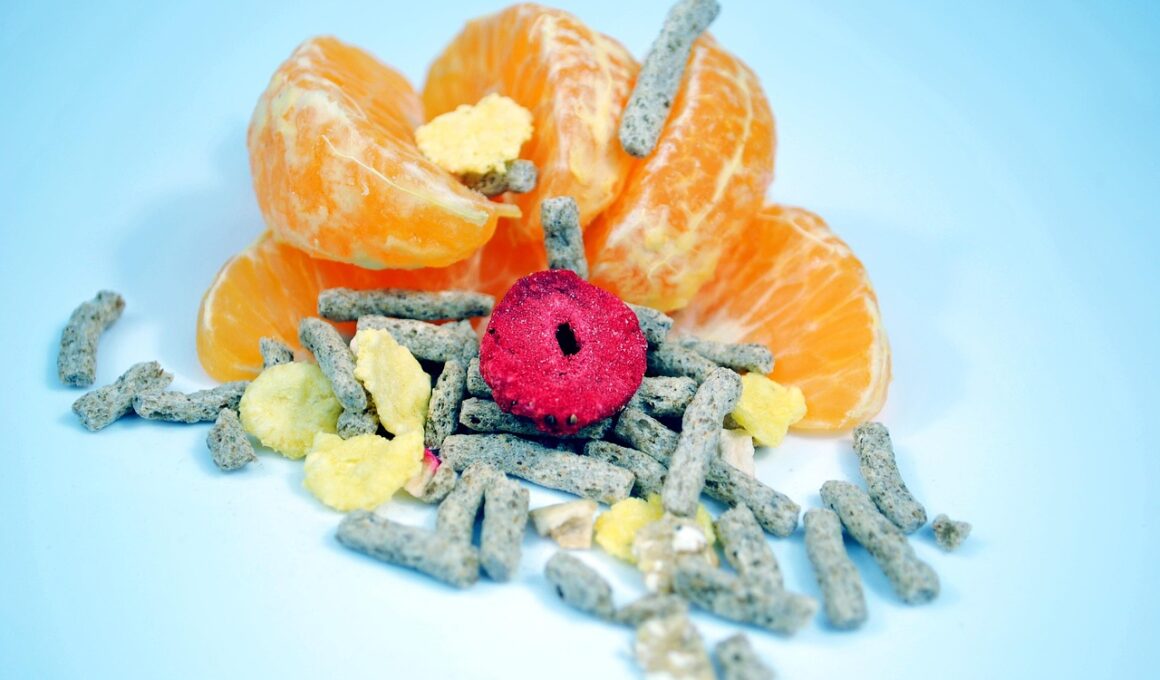The Role of Fiber in Promoting Healthy Digestion
Fiber plays a crucial role in promoting healthy digestion and overall gut health. It is often categorized into two types: soluble and insoluble. Soluble fiber dissolves in water and helps regulate blood sugar levels, while insoluble fiber adds bulk to the stool, facilitating its passage through the digestive tract. Eating a diet rich in fiber not only aids digestion but also plays roles in weight management, as fiber-rich foods tend to be more filling. Fruits, vegetables, legumes, and whole grains are excellent sources of both soluble and insoluble fiber. Incorporating these foods into meals can improve digestive efficiency and prevent issues such as constipation or irritable bowel syndrome. Increasing fiber intake should be done gradually and accompanied by increased water consumption to support proper digestion. The benefits of fiber extend beyond the digestive system as well. Regular consumption of fiber may lower the risk of gastrointestinal diseases and contribute to heart health. Consuming a variety of fiber-rich foods is key to achieving digestive wellness, and maintaining a balanced diet can improve quality of life dramatically.
One effective strategy for enhancing dietary fiber is to assess current eating habits. It’s important to identify fiber-rich foods that can be easily incorporated into meals. Breakfast can be an excellent opportunity to include fiber, such as oatmeal topped with fresh fruits or whole grain toast. Similarly, lunch and dinner recipes can be enhanced by adding beans, lentils, and whole grains like quinoa or barley as side dishes. Snack options should also focus on fiber, like mixed nuts, seeds, or fresh vegetables with hummus. Keeping fiber-rich snacks available encourages healthier choices throughout the day. Meal prepping can be beneficial for ensuring that fiber-rich options are always on hand. By preparing meals in advance, individuals can make conscious choices that align with their health goals. However, certain dietary adjustments may cause discomfort initially, as increasing fiber intake can lead to bloating. Gradually introducing fiber into the diet while listening to the body’s cues is crucial. Fiber’s diverse health benefits are vital for maintaining a functional digestive system, essential in supporting daily body processes.
Understanding Dietary Fiber
Understanding dietary fiber’s different types can help individuals tailor their diets for optimal digestion. Soluble fiber, found in foods like oats, apples, and beans, dissolves in water and forms a gel-like consistency in the gut. This characteristic allows it to slow down digestion, aiding in stabilizing blood glucose levels. On the other hand, insoluble fiber, present in nuts, whole grains, and vegetables, does not dissolve and instead adds bulk to the stool. Consequently, this type encourages regular bowel movements, contributing to reduced constipation. Both varieties serve unique functions within the digestive system and can impact gut microbiota positively. Fermentable fibers foster beneficial gut bacteria, which play a role in synthesizing essential vitamins and maintaining a balanced digestive environment. This relationship between dietary fiber and gut health underscores the importance of a varied diet rich in fiber. Strategies to increase fiber intake should incorporate diverse food sources to meet daily recommendations while enhancing overall gut health. Consuming a wide range of fiber-rich foods can ultimately lead to improved digestion, happier gut microbiome, and greater overall well-being.
Another significant aspect of fiber consumption is its impact on long-term health. Studies have shown that diets high in fiber are associated with a lower risk of several chronic illnesses, including type 2 diabetes, heart disease, and certain cancers. For instance, soluble fiber can play a role in lowering cholesterol levels, contributing to cardiovascular health. Meanwhile, diets rich in fiber can help manage weight effectively by promoting feelings of fullness and minimizing cravings. Such satiety can reduce overall caloric intake, aiding in weight management. Additionally, fiber’s effects on blood sugar regulation and insulin sensitivity can help prevent metabolic syndrome. Incorporating fiber into one’s diet can take various forms, such as choosing whole grains over refined options or snacking on fresh fruit instead of processed snacks. The synergy between good digestion and fiber’s protective benefits highlights the importance of making informed dietary choices. Finally, regular fiber consumption supports a balanced gut microbiota, which is increasingly recognized for its role in supporting immune health and reducing inflammation throughout the body. These long-term health benefits warrant commitment to a fiber-rich diet.
The Gut-Brain Connection
Research increasingly suggests that dietary fiber can influence not just physical health, but also mental well-being. This is known as the gut-brain connection, emphasizing how gut health can affect mood, cognition, and overall mental health. Fiber-rich diets are beneficial for gut bacteria diversity, which produces metabolites, including short-chain fatty acids, that have positive effects on the brain. These metabolites can influence neurotransmitter production, critical for regulating mood and anxiety. Moreover, a balanced gut microbiota supports a healthy immune system, reducing the potential for inflammation, which has been linked to mental health disorders. Understanding how dietary choices affect cognitive health highlights the necessity of maintaining a well-balanced diet rich in fiber. For example, incorporating fermented foods such as yogurt or sauerkraut, alongside high-fiber plant-based foods, can promote both gut health and mental wellness. Strategies for increasing fiber intake should also consider offering a variety of enjoyable food options. Doing so not only meets nutritional needs but enhances lifestyle satisfaction. In conclusion, prioritizing fiber in the diet can lead to improvements in both physical and mental health, showcasing its integral role in overall health.
While increasing fiber intake offers numerous benefits, it is essential to approach dietary changes thoughtfully. Sudden increases in fiber can lead to digestive discomfort, including gas and bloating, which may discourage adherence to a high-fiber diet. It is advisable to gradually elevate fiber consumption over several days, allowing the digestive system time to adjust. Additionally, drinking ample water is vital to help fiber do its job effectively. The recommended water intake helps prevent constipation and supports fiber’s ability to move safely through the digestive tract. Keeping a close eye on food labels can also assist in monitoring fiber intake; many packaged foods have measurable fiber content that can aid in choosing healthier options. Fiber-rich options, particularly whole grains, should be prioritized over highly processed foods. Evaluating daily habits and making mindful choices are essential strategies for long-term success in achieving dietary fiber goals. In summary, while fiber is integral to promoting healthy digestion, a balanced approach to its introduction into the diet can enhance its positive effects. Learning and adapting to one’s needs will support an enjoyable and sustainable healthy eating journey.
Practical Tips for Boosting Fiber Intake
To ensure adequate fiber intake, here are practical tips that can be easily integrated into any lifestyle. First, start the day with high-fiber breakfast options, such as oatmeal or whole grain cereals. Smoothies can easily have fiber added by including spinach, chia seeds, or flaxseeds. For lunch and dinner, aim to fill half of the plate with vegetables, focusing on whole grains and legumes. Snacking smartly can significantly increase fiber intake; try replacing chips with air-popped popcorn, sliced veggies, or fresh fruit. Setting achievable dietary goals can help track daily fiber consumption and encourage progress. Introducing a variety of fiber-rich foods can combat meal monotony and make meals more exciting. Experimenting with new recipes can also help create excitement around healthy eating habits. For those on the go, fiber bars or trail mixes are practical solutions for busy days. Additionally, utilizing apps or food diaries can assist in tracking fiber intake more effectively. Finally, remember to consult a health professional when making significant dietary changes. This will ensure a personalized approach to fiber intake that aligns with individual health needs.
In conclusion, fiber is a vital part of a healthy diet, significantly contributing to digestive health and overall wellness. Understanding the different types of fiber and their benefits allows for informed food choices that can improve both physical and mental health. By strategically increasing fiber intake in manageable ways, individuals can make sustainable changes that promote better digestion. The myriad benefits of fiber extend beyond digestion, influencing long-term health and reducing disease risk. From the gut-brain connection to practical implementation of fiber-rich foods, it is clear that prioritizing fiber can foster well-being. Maintaining variety in food choices ensures a balanced nutrient intake, vital for digestive and overall health. Leveraging simple strategies may significantly enhance one’s daily routine and health outcomes. Creating enjoyable and fiber-rich meals that integrate various tastes can make healthy eating both fulfilling and sustainable. Ultimately, investing in a fiber-rich diet marks a proactive approach to overall health and longevity.


